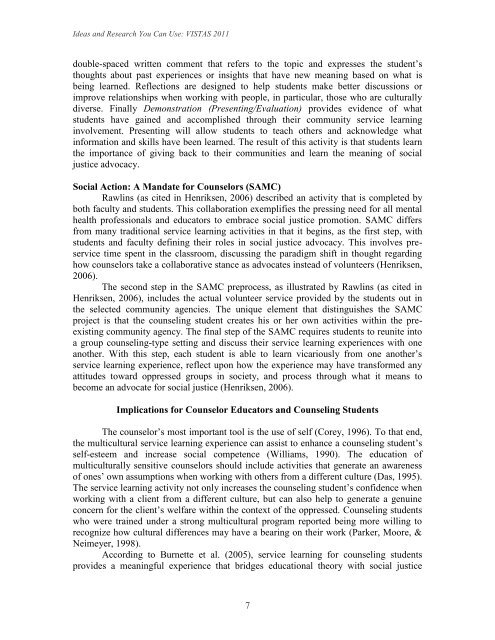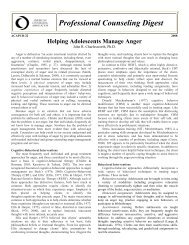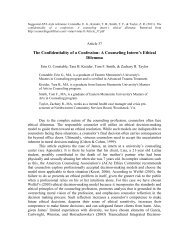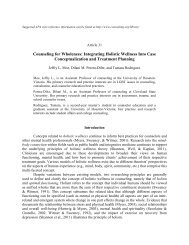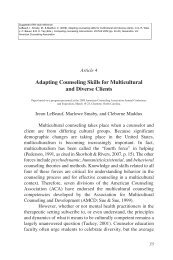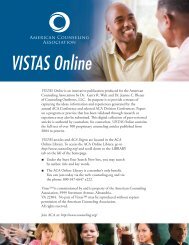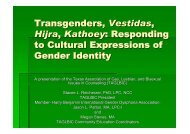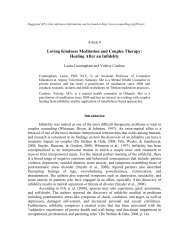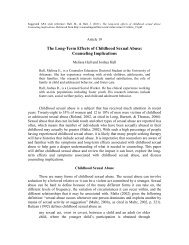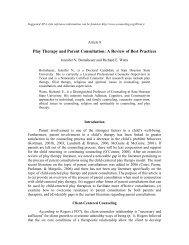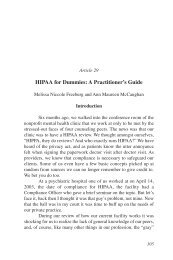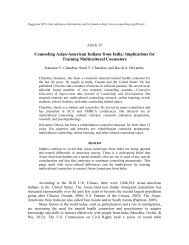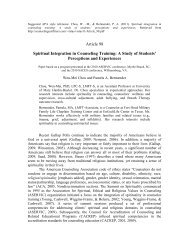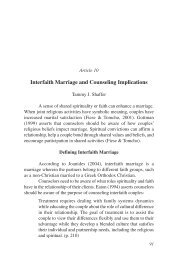Article 32. Teaching Social Justice Through Service Learning.
Article 32. Teaching Social Justice Through Service Learning.
Article 32. Teaching Social Justice Through Service Learning.
Create successful ePaper yourself
Turn your PDF publications into a flip-book with our unique Google optimized e-Paper software.
Ideas and Research You Can Use: VISTAS 2011double-spaced written comment that refers to the topic and expresses the student’sthoughts about past experiences or insights that have new meaning based on what isbeing learned. Reflections are designed to help students make better discussions orimprove relationships when working with people, in particular, those who are culturallydiverse. Finally Demonstration (Presenting/Evaluation) provides evidence of whatstudents have gained and accomplished through their community service learninginvolvement. Presenting will allow students to teach others and acknowledge whatinformation and skills have been learned. The result of this activity is that students learnthe importance of giving back to their communities and learn the meaning of socialjustice advocacy.<strong>Social</strong> Action: A Mandate for Counselors (SAMC)Rawlins (as cited in Henriksen, 2006) described an activity that is completed byboth faculty and students. This collaboration exemplifies the pressing need for all mentalhealth professionals and educators to embrace social justice promotion. SAMC differsfrom many traditional service learning activities in that it begins, as the first step, withstudents and faculty defining their roles in social justice advocacy. This involves preservicetime spent in the classroom, discussing the paradigm shift in thought regardinghow counselors take a collaborative stance as advocates instead of volunteers (Henriksen,2006).The second step in the SAMC preprocess, as illustrated by Rawlins (as cited inHenriksen, 2006), includes the actual volunteer service provided by the students out inthe selected community agencies. The unique element that distinguishes the SAMCproject is that the counseling student creates his or her own activities within the preexistingcommunity agency. The final step of the SAMC requires students to reunite intoa group counseling-type setting and discuss their service learning experiences with oneanother. With this step, each student is able to learn vicariously from one another’sservice learning experience, reflect upon how the experience may have transformed anyattitudes toward oppressed groups in society, and process through what it means tobecome an advocate for social justice (Henriksen, 2006).Implications for Counselor Educators and Counseling StudentsThe counselor’s most important tool is the use of self (Corey, 1996). To that end,the multicultural service learning experience can assist to enhance a counseling student’sself-esteem and increase social competence (Williams, 1990). The education ofmulticulturally sensitive counselors should include activities that generate an awarenessof ones’ own assumptions when working with others from a different culture (Das, 1995).The service learning activity not only increases the counseling student’s confidence whenworking with a client from a different culture, but can also help to generate a genuineconcern for the client’s welfare within the context of the oppressed. Counseling studentswho were trained under a strong multicultural program reported being more willing torecognize how cultural differences may have a bearing on their work (Parker, Moore, &Neimeyer, 1998).According to Burnette et al. (2005), service learning for counseling studentsprovides a meaningful experience that bridges educational theory with social justice7


